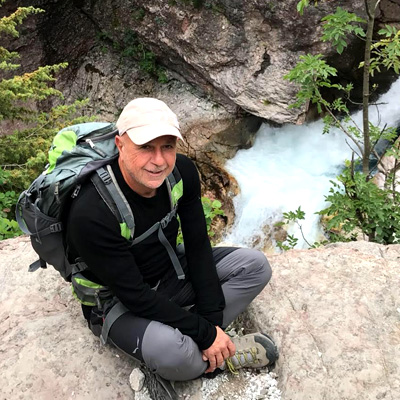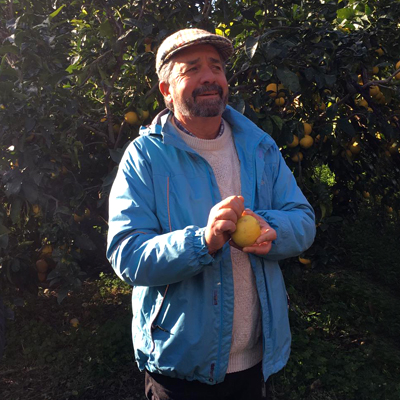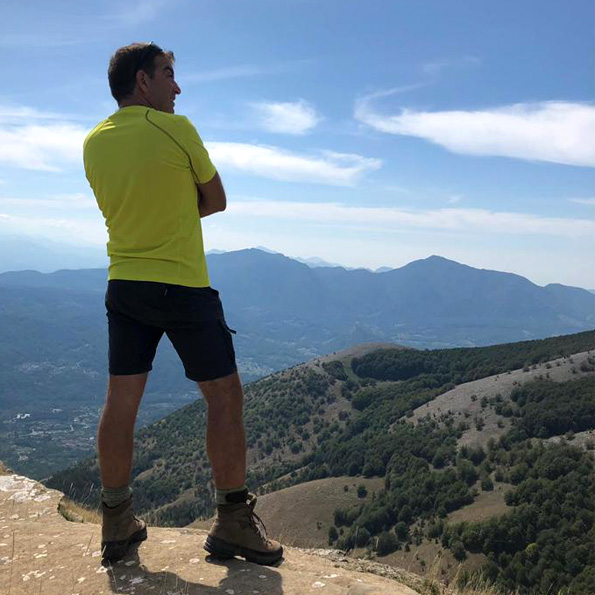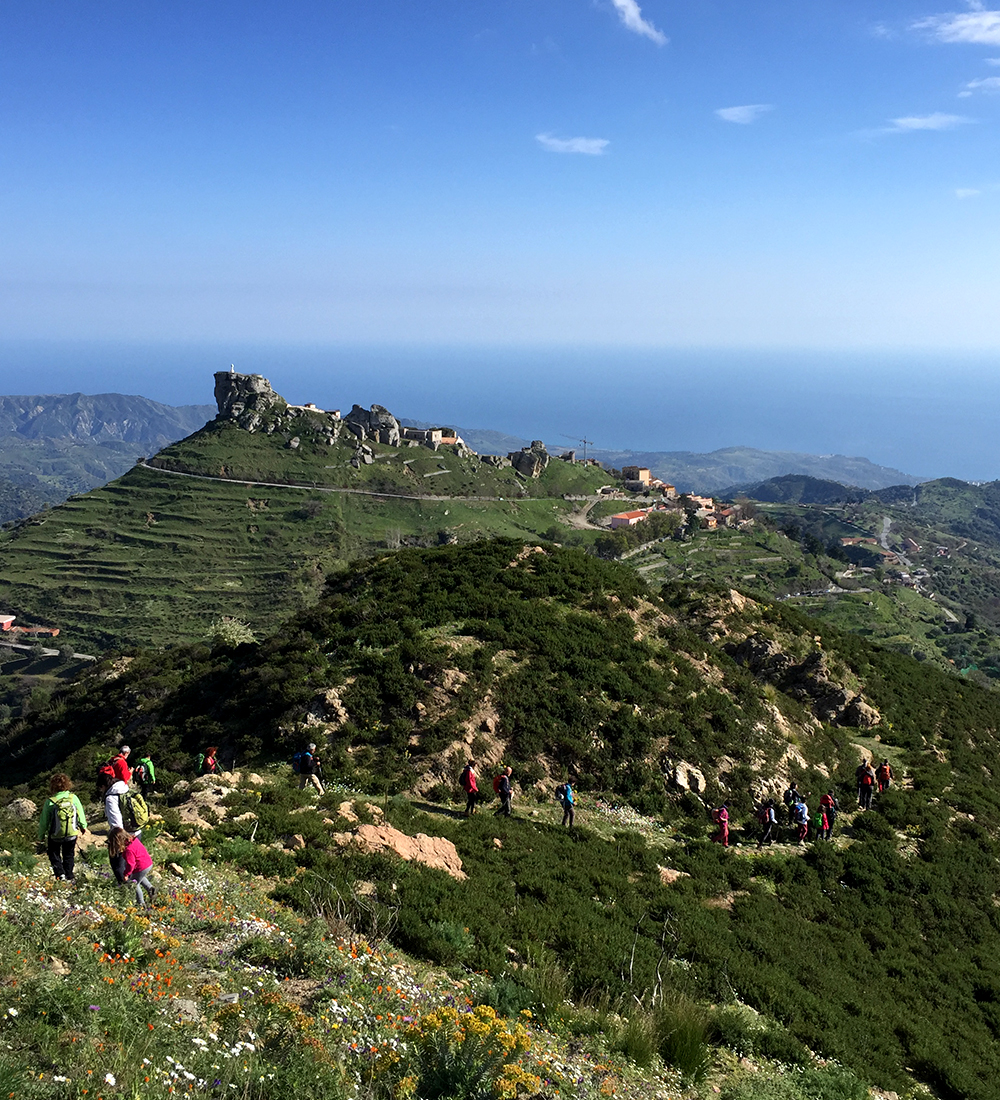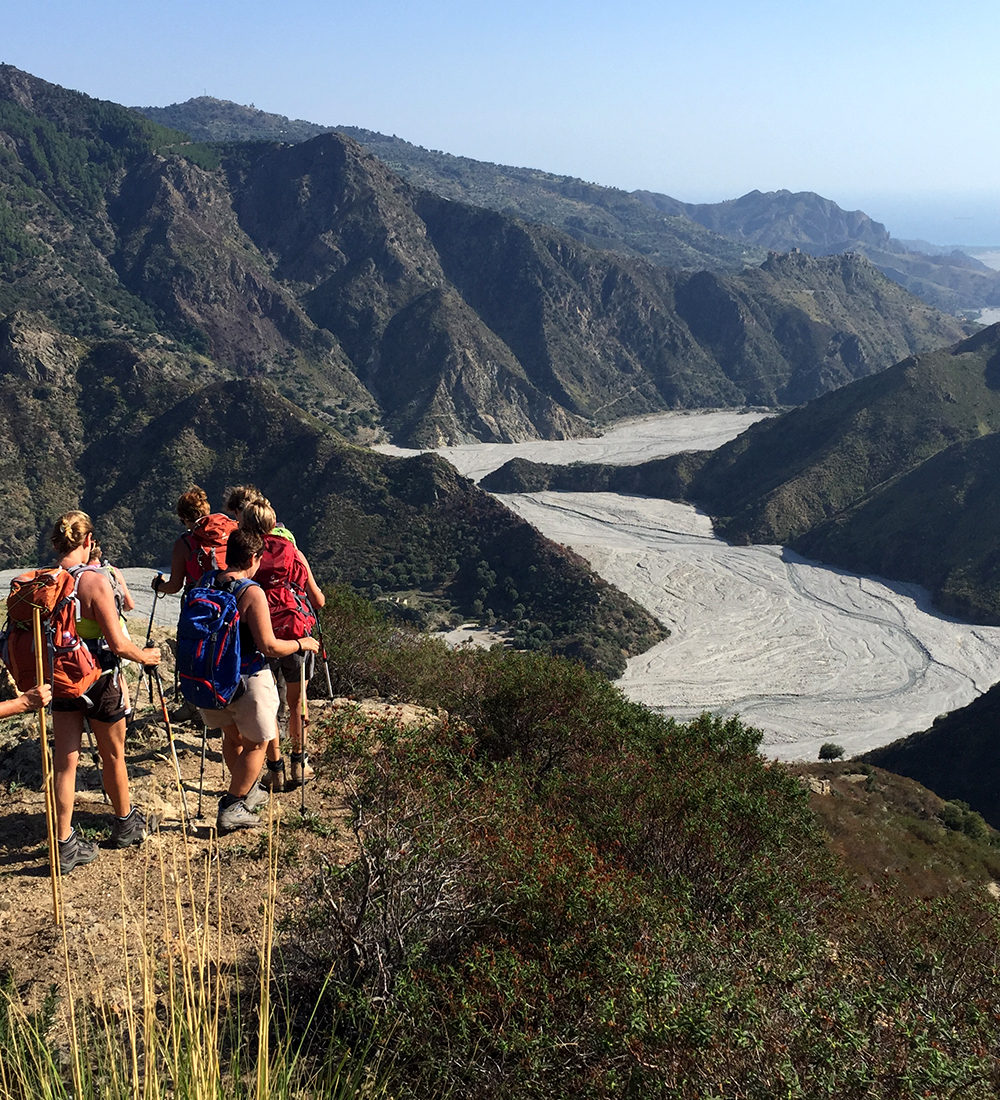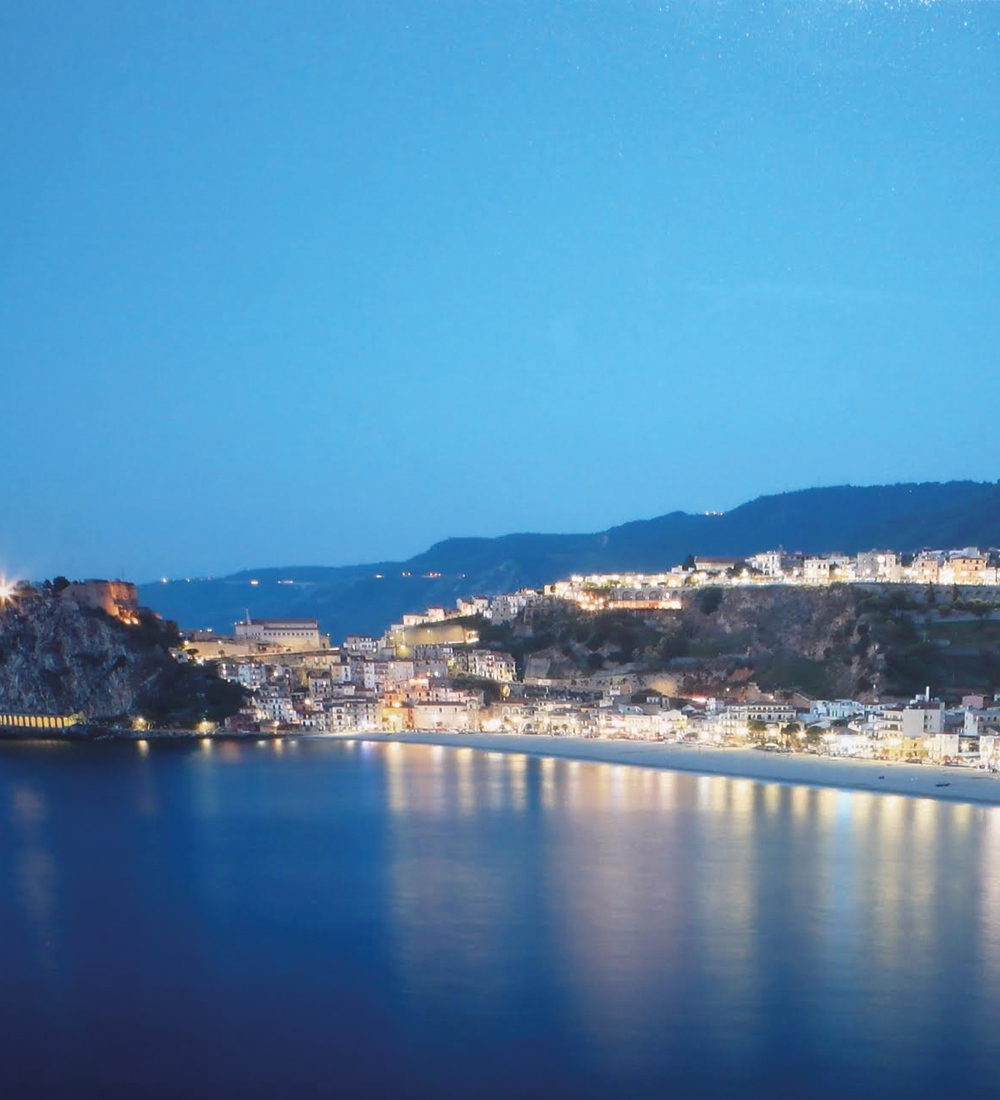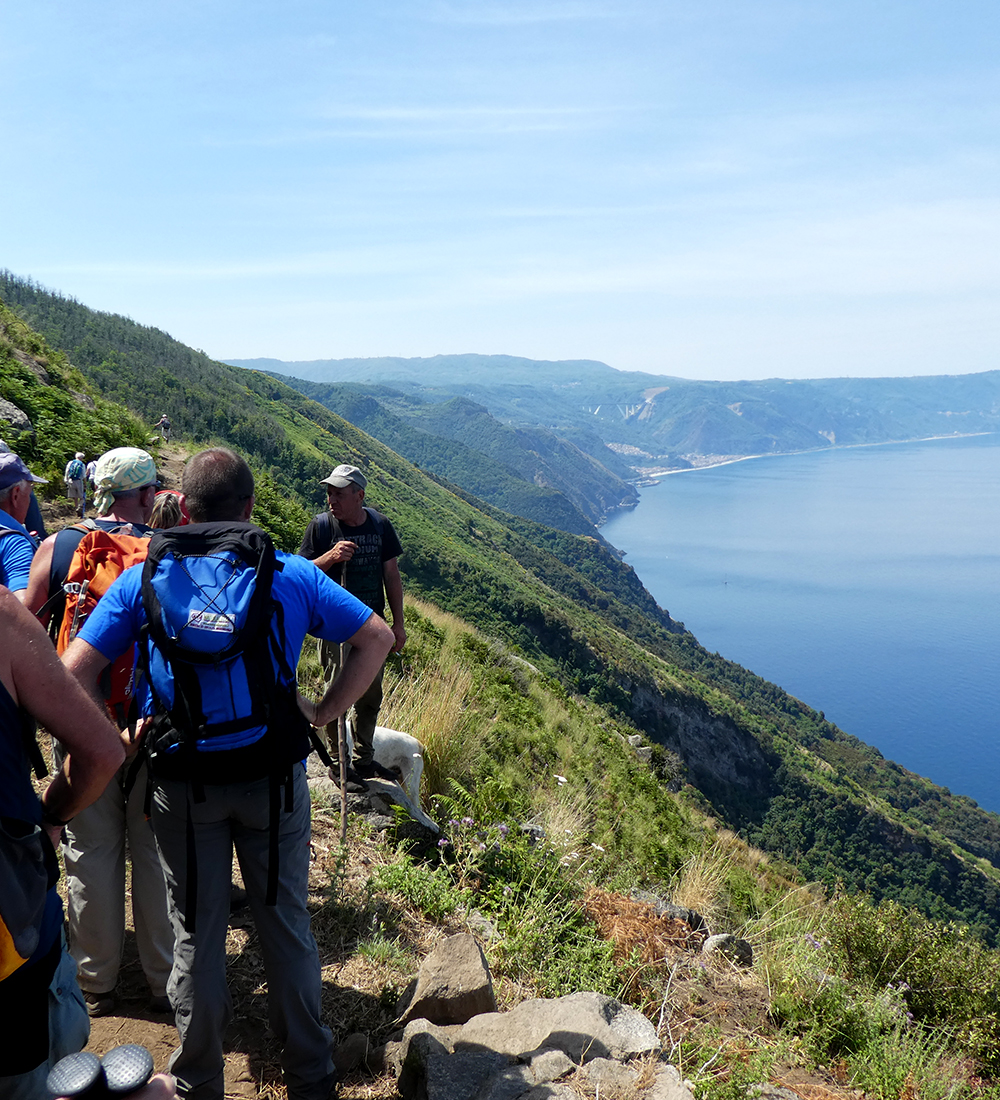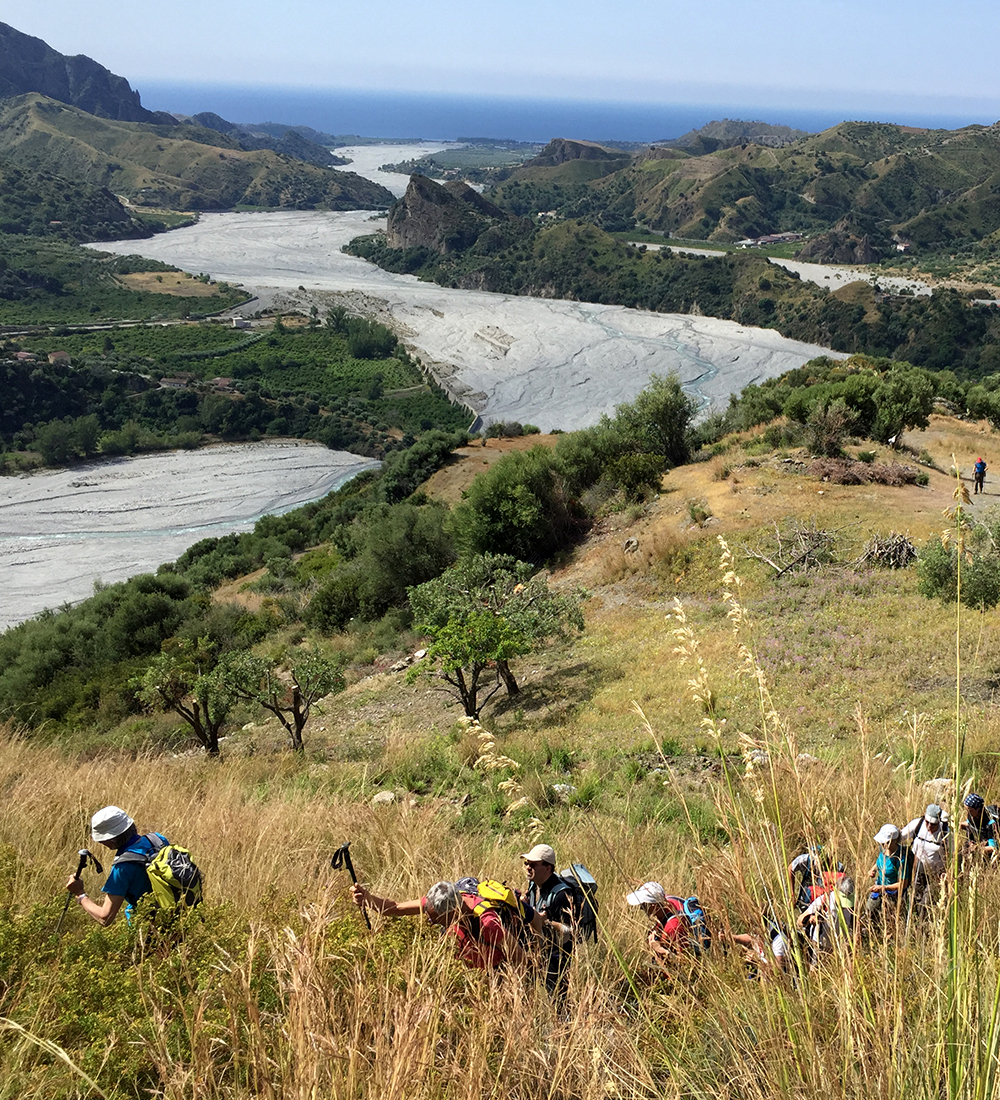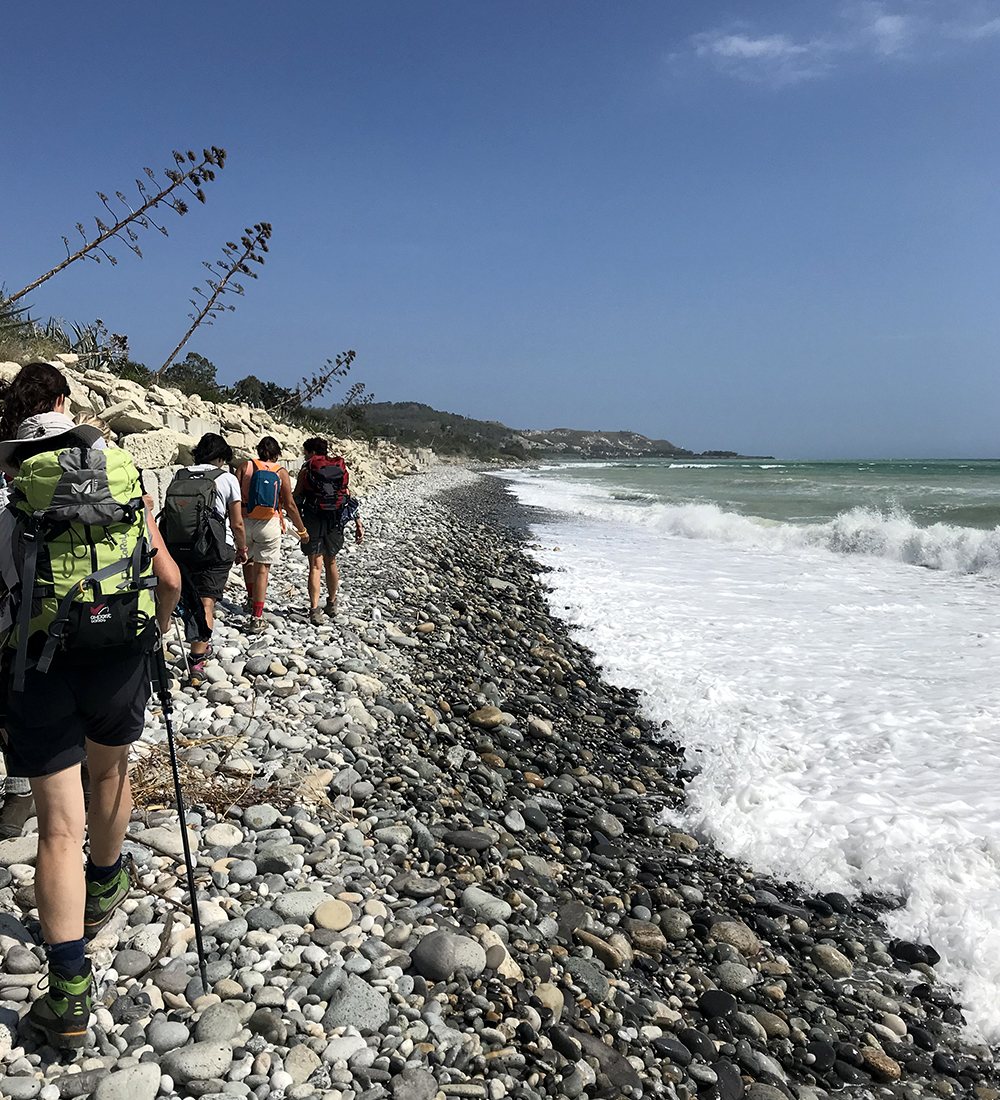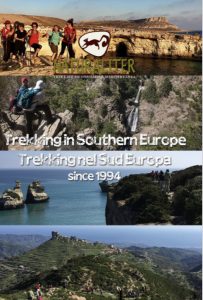Who We Are
Naturaliter is a Co-operative Tourism Society, founded in 1998. It’s headquarters are in the Area of the Greeks of Calabria, in Aspromonte National Park (Calabria, Italy).
The founding partners come from different professional backgrounds, including sustainable development training, hiking and climbing, touristic events organisation and agricultural tourism. Their varying skills have been brought together to create tourism services networks in protected areas, involving local communities through innovative programmes of participation and co-operation.
What We Do
– We organise and propose hiking tours in areas of natural value and interest in the Mediterranean basin. The tours range from 2 to 15 days in length, and are intended for organised groups, of a minimun of 8 people.
– We offer a network of rural accomodation (farm houses, apartments, hikers’ huts in the forests and small family hotels) which welcome tourists in a manner that recalls the Bed and Breakfast.
– We actively involve the local communities in catering for groups, by organising interactive events and meetings with the human resources present in each territory, from shepherds to craftsmen, village elders to housewives, local musicians and entrepeneurs and associations.
– We manage the different aspects of the tours, from logistics to transport, providing daily present assistance to the groups.
– We use minibuses to transport bags and equipment, which are also at the disposal of anyone who does not wish to undertake the scheduled hike for the day, and will thus be able rejoin the group in the evening.
– We personalise the itineraries, adapting them to each groups specific requests where possible. We provide detailed information about altitudes, hike-times, logistics, transfer times, and the particular characteristics of each territory proposed.
Naturaliter does not organise extreme-sport tours.
Mission
Our mission is to encourage, extend and implement cooperation among local communities in de-populated zones of the Mediterranean, providing such communities with opportunities for sustainable development in full respect of the environmental resources of each area, and opportunities for social and cultural interaction with nature-tourists.
The Partners
Our Guides
Naturaliter also collaborates with expert local guides in order to provide tour participants with the chance to gain deeper insights into the social and environmental aspects of the regions they visit:
- Aspromonte: Angelo Frangipani, Domenico Cuppari, Giuseppe Battaglia, Natale D’Aguì, Antonio Stranges, Angelo D’Aguì, Mario Giuseppe Petrulli, Antonio Frangipani, Antonio Russo.
- Pollino: Emanuele Pisarra.
- Cilento: Salvatore Calicchio.
- Sila: Francesco La Carbonara, Domenico Flotta, Eduardo Santoro.
- Sicilia: Giuseppe Battaglia.
- Etna: Giuseppe Amendolia.
- Isole Eolie-Lipari: Giuseppe Allegrino.
- Isole Eolie-Stromboli: Mario Zaia.
- Isola di Pantelleria: Giovanni Bonomo.
- Isole Egadi: Pietro Torrente.
- Creta: Katerina Marinaki
- Cefalonia e Itaca: Arian Muraj
- Santorini: Vicky Matsaka
HIKING TOURS
Calabria
At the southern-most tip of the Italian peninsula, in the province of Reggio Calabria, Aspromonte National Park extends from the Tyrrhenian Sea to the north, to the Ionic sea in the south, and from the Catanzarese heights in the east to the Straits of Messina in the west.
According to some scholars, the term ‘Aspromonte’ may refer to the harshness of the terrain (aspr- ‘harsh’ monte-mountain). According to others, it derives from the Byzantine-greek expression aspròs, meaning ‘white’, the colour of the stream beds that wind down from the mountains to the Ionic Sea.
The mountains of Aspromonte came into existence together with the Alps, roughly two hundred million years ago. The landscape was profoundly altered by successive epochs, culminating in the cataclysmic events which began when Africa started to advance towards Europe. The waters flowed back, and the crests of the Alps rose up. The peaks of Aspromonte and the other mountain ranges of Calabria represent their southernmost vangaurd.
From the geological and geomorphological point of view, Aspromonte has a central nucleus of gneiss, at times granitiferous. It resembles an immense and imposing vulcanic cone, deeply furrowed along it’s southern face by steep river valleys that plummet towards the coast. The northern face features instead the so-called ‘plains’ or ‘fields’ which gently descend toward the sea. The highest point of the range is Montalto (High-mount) at 1956 meters above sea level.
The flora of Aspromonte is dominated by mediterranean maquis (heather, myrtle, mastic, rockrose, devil’s milk, rose-laurel, tamarisk, various kinds of broom, etc) along the Ionic coast up to an altitude of 800/900 meters a.s.l, where it gives way to dense mixed woods of chestnut, aspen, holm and various species of oak.
At higher elevations still lie expanses of forests made up for the most part of conformations of beech, silver fir and pine.
Along the Tirrenian coast, where a more humid climate prevails, the mediterranean maquis is substituted by forests of ancient olive trees and by citrus orchards.
Furthermore, the rich and colourful outbursts of flowers in the winter and spring include, amongst many others, violets, narcissus, daisies, marigolds, crocus, asphodels, forget-me-nots, peonies and a wide variety of orchids.
As far as the fauna of Aspromonte is concerned, we are now certain of the presence of the appenine wolf, of the wild cat (sighted by Naturaliter in june 2000, along the road which leads from the Fields of Bova towards Old Roghudi); of the dromio – a particular species of oak rat; of the yellow bellied toad; of the dormouse; of the southern squirrell with its unmistakeable black livery; and of the speckled salamander. In the rivers at high altitude there is also to be found the trout. It is possible to witness the migration of falcons over the Straits of Messina from May to June. In the park may be seen the Bonelli eagle (sighted by Naturaliter in June 2000, along the Bonamico River) and buzzards and kestrels, which are common in all areas. There are also sparrowhawks, lanners, the black woodpecker, hoopoes, jays, blackbirds, royal owls, civet owls, barn owls, tawny owls, horned owls, mediterranean patridges and cuckoos.
Aspromonte National Park was founded on January 14, 1994, with a Decree of the President of the Italian Republic.
The territories it protects amount to 76,000 hectares, spread over 37 different Council Administrations within the Province of Reggio Calabria. The Park headquarters are located in Gambarie d’Aspromonte, in the Council Administration of Santo Stefano d’Aspromonte (RC).
Among the many fascinating objects of geographic and cultural interest, there are:
Montalto: at 1956mt it is the greatest elevation of the region, from whose beech-coverd peak it is possible to admire a 180° panorama of the Straits of Messina, the vulcano Etna in Sicily, the Eolian Islands, the Tyrrhenian and Ionic Seas and the backbone of the appenines stretching away to the north.
Fiumare: this particular type of seasonal river is found only in Aspromonte and in Mongolia’s Gobi Desert. They consist of wide gravel river-beds whose flow of water waxes and wanes drammatically with the changing seasons and which, on moon-lit nights, literally glow phosphorescent.
Waterfalls: Maesano Falls, Aposcipo Falls, Forgiarelle Falls, Amendolea Falls, Mundu and Galasia Falls, and numerous other smaller but equally wild and spectacular cascades, together with narrow river gorges (Furria, La Verde, Spasola) whose sheer rock walls rise up to 100 mt above the watercourse. There are also lakes (Lake Costantino) and other natural monuments, such as haunting monoliths (Cap Rock, Long Rock, Castle Rock, Saint Peter’s Rock, Dragon Rock and the Milk Barrels).
Ghost villages: these fascinating ancient towns, such as Old Africo, Casalinuovo, Old Roghudi, Pentadattilo, Chorio di Roghudi and Ferruzzano, were abbandoned following floods in 1951 and 1971.
There are also lively villages of immense historical, cultural and architectural charm and interest, amongst which Gerace, San Giorgio Morgeto, Bova, Palizzi, Mammola, San Lorenzo, Antonimia, the historic centre of San Luca, and Staiti.
The presence of the Greeks of Calabria in the Grecanic Area is also of the greatest importance. Equally important, but from the religious point of view, is the Sanctuary of Polsi, the home of an ancient cult of the Madonna, which is the final destination of fervent annual pilgramages from as far away as Sicily.
From the economic point of view, Aspromonte represents an extremely varied agricultural landscape, composed of vast olive groves – from which excellent extra-vergin oil is extracted – and large plots where citrus fruits such as oranges, mandarins and lemons are grown, along side other fruit trees, grapes and above all bergamot.
Bergamot (citrus bergamia) is similar to the lemon in colour and much like an orange in shape. It’s origins are uncertain, though some experts believe it may be the result of a spontaneous mutation of the sour orange. The only place in all the world where it thrives and produces abundant fruit of the highest quality is on the coastal region between Reggio Calabria and the town of Lochri. The fruit matures in the winter. The essential oil extracted from it is used above all in the manufacture of cosmetics and perfumes. It is also famous as the distinct flavour that has been added to tea blends in the north of England for over 200 years to create the wonderfully aromatic Earl Grey tea. For some time now it has been used in the pharmaceutical industry for its antiseptic and antibiotic qualities. It also provides a delightful aroma for making cakes, sweets, liqueurs and candies.
The Cuisine of Aspromonte is highly varied, with a number of different culinary traditions surviving in an authentic way. In fact, here deep-frying in olive oil remains a fundamental technique for preparing food. Alatucia (pork crackling) together with eggs are characteristic of the area, as are curcudia, a local variant of polenta. Goat’s meat is widely used, and one of the most exquisite specialities of the region is goat alla pecurara, which is prepared above all by men (pork and beef is also cooked). The area is also well known for its production of ricotta and cheeses following ancient recipes. The home-made pasta called maccarruni is very tasty. It consists of long strands of pasta dough wrapped around grass stems to make a tubular shape, making sure the pasta is thin and picks up the flavours of the sauce: normally goat’s meat sauce with salted ricotta grated on top.
A number of conserves are common, such as sun-dried tomatoes and olives preserved in oil. A range of salamis, such as capicollo (spiced and smoked ham) and suppizzata (large, spiced and smoked sausage) are delicious with home made bread. Not to be missed are the wonderful parmigiana di melanzane, an oven-baked dish made of eggplants, meat and tomatoes, and the peperonata, made with capsicum. Christmas sweets include petrali (fruit, nut and honey rolls) and zeppole (sweet fried bread dripped in honey), whilst at Easter the women make aggùte and cuddhuraci. There are also sciaruni, made with pastry, ricotta and egg, and various types of pita bread and scaddateddhi (fried breads stuffed with anchovies or ham and cheese). Dried figs with almonds are a must, as are the mulberries and dried pears.
Among the wines native to the area are to be found the Cuvertà and the Palizzi which, whilst not ‘DOC’, are widely appreciated. DOC wines from the region include the Mantonico and the Vino Greco di Bianco, a dessert wine. The production of a range of home-made liqueurs is well established, including limoncello made from lemons and nocino made from wallnuts. Last but not least, there is magnificent extra-vergin oil, made from the fruit of centuries-old olive trees in both ancient and modern olive mills.
In the field of hand-crafts, the women of Aspromonte still make time for weaving, and create sheets, kitchen towels and table-cloths. They pay particular attention to the artistic decoration of blankets and carpets, known as pezzare, which are typical of the area around Samo. Lively multicoloured decorations which strongly recalls the Byzantine style are to be found especially in the town of Gerace, where fine laces are produced. In fact, weaving using a variety of threads, including linen, hemp, silk, wool and broom is a strong tradition.
Woodcraft is also common in the Grecanic Area, where it is linked to the rural economy of the mountain shepherds who, while watching their flocks, make elaborate moulds for sweets, spoons, forks and walking staffs, now as in the past. Tobacco pipes are also crafted out of Calabrian heather. The pipes are ‘seasoned’ for up to 10 years.
In Gerace (on the Ionic coast) and Seminara (on the Plain of Gioia Tauro) there is a noteworthy production of ceramics, including Greek and Roman style amphoras, and characteristic anthropomorphic bottles, considered to be good-luck charms…
Aspromonte National Park (Southern Calabria)
History of this hike: Naturaliter began working in Aspromonte with two hikes: Upper Aspromonte and the Grecanic Hike. Every year we organise an average of 40 weeks of hiking, half of which in Aspromonte alone. Our paths roam through wild and uncontaminated areas, among extremely hospitable communities and semi-abbandoned villages which harbour ancient traditions. Our footsteps take us far away from the influx of mass tourism, to places where the rhythm of everyday life is still slow, and time seems to have stood still.
Aspromonte is a surprise!
If you think Aspromonte is an inaccessible, harsh and arid landscape, think again! These mountains will fascinate you with their countless waterfalls, river gullies, natural lakes, immense monoliths, dense woods dotted with centuries-old trees and the wonderfully varied tasty and abundant traditional cooking. This is a wonderful and surprising way to spend a week in touch with nature, without the stress of carrying your bags as you walk, because our local drivers will transfer them for you each day.
Hike duration: 8 days / 7 nights.
Period: from April to June and from September to November.
Number of participants: from a minimum of 8 to a maximum of 35.
Wandering accomodation: Accomodation varies depending on the leg of the itinerary and on request. The itinerary includes an agritourism (bed and breakfast style accomodation in a converted farmhouse) at 8 km from the Ionic coast; apartments that form part of the ospitalità diffusa (lit. ‘spread-out hospitality) network, a 3-star hotel at 1100 mt above sea-level and, on request, tents provided by Naturaliter, in a camping site behind the ranger’s huts at Cano (1450 mt above sea-level). Food is organised in restaurants managed by local associations, with strictly traditional menus featuring all the local specialities of the season. Should you decide to stay in tents at Cano, the food will be cooked by forestry workers. The service includes all meals and snacks.
Encounters with local farmers and craftspeople are part of the itinerary. Along some sections of the itinerary the paths are not marked, and there is a substantial difference of altitude within the day’s walk, featuring numerous desents and ascents. For this reason it is best suited to people who already have experience in mountain hiking, and who are used to roughing it, especially if the camping option is chosen.
Hike Plan:
» Agritourism “il Bergamotto”/ Amendolea river vally / Maradha – loc. Palazzine di Gallicianò – Gallicianò; walking time: 2h 30′ .
Return: Gallicianò/ Amendolea river valley località Oleandri/ ruined mill at Focolio – Amendolea; walking time: 2h 30′.
» Amendolea / Mt Brigha / Bova . Walking time: 3h 30′
» Bova / Lestizi / Spartusa / Noì / Old Roghudi; walking time: 4h 30′.
» Chorio di Roghudi / Mt Cavallo / Pesdavoli / Casalino / panoramic look-out over Maesano Falls / Menta Valley Cavaliere-Dam on the river Menta; walking time: 8h.
» Cano/ Bonamico River (“Infernal Valley”) /Canovai/Forgiarelle Falls; loop: Canovai /Cano ; walking time:7h.
» “Sentiero Italia” : Polsi/ Lago Costantino/San Luca; tempi: 6h.
» Staiti / Mt Cerasia, loop: Staiti; walking time: 4h.
Optional: prolong the itinerary for one day with a walk that is partly a loop: Natile nuovo/ Rocche di San Pietro/Pietra Cappa/Natile vecchio; walking time: 5 h.
Getting there and away: pick-up and drop-off is arranged at Reggio Calabria Centrale Railway Station, or at Reggio Calabria Airport (“Aeroporto dello Stretto -Tito Minniti”).
Aspromonte National Park and the Serre Regional Nature Park (Southern and Eastern Calabria)
History of this hike: Every year we organise an average of 40 weeks of hiking, half of which in Aspromonte alone. Our paths roam through wild and uncontaminated areas, among extremely hospitable communities and semi-abbandoned villages which harbour ancient traditions. Our footsteps take us far away from the influx of mass tourism, to places where the rhythm of everyday life is still slow, and time seems to have stood still.
The Serre is a mountain range that forms part of the Calabrian Appenines, spread out over parts of the Provinces of Reggio Calabria, Vibo Valentia and Catanzaro. This mountain range melds with the foothills of the Aspromonte to the south and with those of the Sila mountains to the north. From a geo-morphological point of view it is made up of two long mountain chains lying parallel along the line of the Appenine range. The mountainous massif is divided by the valleys of the basin of the Ancinale River and the Stilaro River, along which is to be found the Ferdinandea, the famous hunting reserve of the Bourbon Kings. Around the historic hunting grounds the Stilo woods spread out, and the imposing Marmarico Falls plummet 90 meters into the Stilaro, to the south. Between the Precariti and the Amuse river valleys flows the majestic River Allaro. Flow-off furrows carved deep into the slopes of the foothills are a highly visible peculiarity of the Serre, a nature park spread out over 17.687 hecatares.
In this region there are places of worship of great historical and cultural significance, including the centuries-old Abbey of the Carthusian Monks in Serra S. Bruno, one of the few Abbeys that is still active, where one can visit the tomb of Saint Bruno of Colonia, the founder of the Carthusian order. There is also the Church of Stilo, probably founded in the X century, in a Byzantine style. In fact, the floor-plan of this church is a Greek Cross, complete with five small cupolas.
Hike Duration: 8 days / 7 nights
Period: from March to June and from September to December.
Number of participants: minimum of 8, maximum of 15
Wandering Accomodation: Accomodation is in apartments and agritourisms (bed and breakfast style accomodation in a converted farmhouse) belonging to the Ospitalità Diffusa network. It is a network of apartments belonging to various families of the small villages in the hills of the Ionic area of the Province of Reggio Calabria. In these small historic farming villages the population is never higher than 500 today, but in the past there were often more than a thousand inhabitants, many of whom emigrated to find work. For this reason there are many more houses than people to live in them. The houses remain fully furnished and in excellent condition, and are available as tourist accomodation following the example of the Bed and Breakfast. Hikers receive a place to sleep, both in uninhabited apartments and in rooms in houses where families still live, and a hearty breakfast made with local products and specialities, served by the host family. Lunches and dinners are served in restaurants managed by local associations, with strictly traditional menus featuring all the local specialities of the season. Should you decide to stay in tents at Cano, the food will be cooked by forestry workers. The service includes all meals and snacks.
Encounters with local farmers and craftspeople are part of the itinerary, along with visits to local wine producing establishments, known in the area as ‘catoi’.
Getting there and away: pick-up and drop-off is arranged at Reggio Calabria or Lamezia Terme airports and railway stations.
Hike Plan:
» Stilo – Cattolica/Mt Consolino; walking time there and back: 3h;
» Bivongi/ Guida Pools / Marmarico Falls/ Ferdinandea (Residence of the Bourbon Kings) walking time: 6h. Visit to the Museum of the Carthusian Abbey of Serra San Bruno.
» Pazzano/ Sanctuary of Santa Maria della Stella/Mt Mammicomito/Pietra di Placanica; walking time: 6h.
» Visit to Gerace (hisoric centre of international importance). Walk: Natile vecchio/Rocche di San Pietro/Pietra Cappa/Natile vecchio; walking time: 5h.
» Palizzi/San Pasquale River Valley/Bova; walking time: 5h.
» Bova/ Gallicianò / “Il Bergamotto” Agritourism-Amendolea;
walking time: 5h
Getting there and away: pick-up and drop-off is arranged at Reggio Calabria or Lamezia Terme airports and railway stations.
“…il viaggiatore deve sempre contare sull’ospitalità di qualche famiglia, in ogni città che visita….” Edward Lear (1847)
History of this hike: Every year we organise an average of 40 weeks of hiking, half of which in Aspromonte alone. This hike is organised every year and has the added feature that it is combined with the International Wold-Music Festival of the Area of the Greeks of Calabria entitled ‘Paleariza’: www.paleariza.it
Hike Duration: 9 days / 8 nights
Period: August
Number of participants: minimum of 8, maximum of 16
Accomodation: accomodation is organised in apartments in the beautiful, medieval, mountain-top town of Bova, with magnificent 360 degree views over Aspromonte and the Mediterranean Sea. Meals are organised at the restaurant of the “San Leo” co-operative of Bova, all meals and snacks included.
Hike Plan:
This is by no means an extreme hike, and is suitable for people who are less experienced in mountain walking. Evening concerts as part of the Paleariza festival follow half-day hikes in the mountains that look out over the Ionic coastline, in the land of the Greeks of Calabria.
Getting there and away: pick-up and drop-off is arranged at Reggio Calabria Centrale Railway Station, or at Reggio Calabria Airport (“Aeroporto dello Stretto -Tito Minniti”).
In Grecanic Aspromonte, with a donkey-train for the transport of baggages
“…il viaggiatore deve sempre contare sull’ospitalità di qualche famiglia, in ogni città che visita….” Edward Lear (1847)
History of this hike: Every year we organise an average of 40 weeks of hiking, half of which in Aspromonte alone. This hike was first organised in the year 2000. The path roams through wild and uncontaminated areas, among extremely hospitable communities and semi-abbandoned villages which harbour ancient traditions. Our footsteps take us far away from the influx of mass tourism, to places where the rhythm of everyday life is still slow, and time seems to have stood still. This itinerary is repeated generally three times yearly.
Introduction:
” Il sistema di viaggio che io e il mio compagno adottammo, allorchè questi diari furono scritti, era il più semplice ed anche il meno costoso: abbiamo, infatti compiuto l’intero viaggio a piedi (..). In Calabria, un’asino per caricarvi quel po di bagaglio che avevamo portato con noi, ed una guida (…). Poiché in quelle province non ci sono alberghi, se non sulla strada carrozzabile che corre lungo la costa occidentale, il viaggiatore deve sempre contare sull’ospitalità di qualche famiglia, in ogni città che visita. ”
Edward Lear, paesaggista/viaggiatore inglese, da: “Diari di un viaggio a piedi in Calabria e nel Regno di Napoli” – Editori Riuniti 1992.
In 1847 the famous English writer and painter Edward Lear (of The Owl and the Pussycat fame) travelled throughout Calabria on foot, accompanied by a guide and with a donkey to carry his luggage. In his travel diary, published as Diary of a Voyage on Foot in Calabria and the Kingdom of Naples, [?] Edward Lear recounts his experiences as traveller in places that he describes as ‘exotic’, and whose rugged landscapes inspired numerous and precious prints. He was the guest of a number of families of the time who helped him to better understand the economic, cultural and social reality of the area. As testimony to his ground-breaking trip, town councils around the Province of Reggio Calabria have dedicated a number of monuments and placques to him.
Today, roughly 160 years later, the experience of this English traveller is recreated in a modern way for tourists from around the world. Using Edward Lear’s travel diary as a benchmark, we created a most singular touristic experience based on travelling on foot from village to village along a path of naturalistic beauty, accompanied by a local guide and an interpreter, with a donkey-train to carry the packs.
Hike Duration: 7 days / 6 nights.
Period: April/May, September/October.
Number of participants: minimum of 8 / maximum of 16
Wandering Accomodation: Accomodation is in apartments and agritourisms (bed and breakfast style accomodation in a converted farmhouse) belonging to the Ospitalità Diffusa network. It is a network of apartments belonging to various families of the small villages in the hills of the Ionic area of the Province of Reggio Calabria. In these small historic farming villages the population is never higher than 500 today, but in the past there were often more than a thousand inhabitants, many of whom emigrated to find work. For this reason there are many more houses than people to live in them. The houses remain fully furnished and in excellent condition, and are available as tourist accomodation following the example of the Bed and Breakfast. Hikers receive a place to sleep, both in uninhabited apartments and in rooms in houses where families still live, and a hearty breakfast made with local products and specialities, served by the host family. Lunches and dinners are served in restaurants managed by local associations, with strictly traditional menus featuring all the local specialities of the season. Should you decide to stay in tents at Cano, the food will be cooked by forestry workers. The service includes all meals and snacks.
Encounters with local farmers and craftspeople are part of the itinerary, along with visits to local wine producing establishments, known in the area as ‘catoi’.
Hike Plan:
This is by no means an extreme hike, but it is nevertheless best undertaken by people who are used to hiking, and are fit enough to sustain 5 – 8 hour hikes on un-marked paths, containing numerous descents and ascents, every day for one week. There are no paths along cliff edges. This is a wonderful holiday for people with a strong sense of adventure and who wish to participate in a hiking experience with a difference.
» Pentedattilo / Tuccio River Valley / Bagaladi; walking time: 6h.
» Bagaladi / San Lorenzo / San Pantaleone /”Il Bergamotto” Agritourism – Amendolea; walking time: 6h.
» “Il Bergamotto” Agritourism – Amendolea / Mt Brigha / Bova; walking time: 6h.
» Bova / San Pasquale River/ Palizzi; walking time: 5h.
» Palizzi / Staiti; walking time: 5h.
Getting there and away: pick-up and drop-off is arranged at Reggio Calabria Centrale Railway Station, or at Reggio Calabria Airport (“Aeroporto dello Stretto -Tito Minniti”).
Aspromonte National Park
Area of the Greeks of Calabria
“…il viaggiatore deve sempre contare sull’ospitalità di qualche famiglia, in ogni città che visita….” Edward Lear (1847)
History of this hike: Naturaliter began working in Aspromonte with two hikes: Upper Aspromonte and the Grecanic Hike. Every year we organise an average of 40 weeks of hiking, half of which in Aspromonte alone. Our paths roam through wild and uncontaminated areas, among extremely hospitable communities and semi-abbandoned villages which harbour ancient traditions. Our footsteps take us far away from the influx of mass tourism, to places where the rhythm of everyday life is still slow, and time seems to have stood still.
Hike Duration: 7 days / 6 nights.
Period: friom March to the middle of June, and from September to November.
Number of participants: minimum of 8 / maximum of 16
Wandering Accomodation:
Accomodation is in apartments and agritourisms (bed and breakfast style accomodation in a converted farmhouse) belonging to the Ospitalità Diffusa network. It is a network of apartments belonging to various families of the small villages in the hills of the Ionic area of the Province of Reggio Calabria. In these small historic farming villages the population is never higher than 500 today, but in the past there were often more than a thousand inhabitants, many of whom emigrated to find work. For this reason there are many more houses than people to live in them. The houses remain fully furnished and in excellent condition, and are available as tourist accomodation following the example of the Bed and Breakfast. Hikers receive a place to sleep, both in uninhabited apartments and in rooms in houses where families still live, and a hearty breakfast made with local products and specialities, served by the host family. Lunches and dinners are served in restaurants managed by local associations, with strictly traditional menus featuring all the local specialities of the season. Should you decide to stay in tents at Cano, the food will be cooked by forestry workers. The service includes all meals and snacks.
Encounters with local farmers and craftspeople are part of the itinerary, along with visits to local wine producing establishments, known in the area as ‘catoi’.
Hike Plan:
This is not an extreme hike, but is best undertaken by people how regularly go hiking.
» Pambola-marina di Condofuri/ Agrifa river valley / Castellace / San Pantaleone / Grotte/ “Il Bergamotto” Agritourism – Amendolea; walking time: 6h, stops included.
» Loop: “Il Bergamotto” Agritourism/ Amendolea River Valley / Maradha – Palazzine di Gallicianò – Gallicianò; walking time: 2h 30′ .
Return: Gallicianò/Amendolea River Valley, Oleandri/Ruined Mill of Focolio – Amendolea; walking time: 2h 30′.
» Amendolea / Mt Brigha / Bova, walking time: 3h 30′
» Bova / Lestizi / Spartusa / Noì / Roghudi vecchio; walking time:4h 30′.
» Bova / San Pasquale River / Palizzi ; walking time: 5h.
» Pietrapennata di Palizzi / Mt Cerasia / Staiti; walking time: 5h.
Optional: Visit to the Museum of Greater Greece (Museo della Magna Grecia) in Reggio Calabria where the world famous statues of the Ancient Greek period, the Riace Bronzes, are on display. Also, a visit to the haunting medieval village of Pentedattilo. There is also the chance to walk along the ‘Violet Road’, along the coastline fo the Messina Straights, in a loop from Mt S. Elia of Palmi, walking time 3h.
Getting there and away: pick-up and drop-off is arranged at Reggio Calabria Centrale Railway Station, or at Reggio Calabria Airport (“Aeroporto dello Stretto -Tito Minniti”).

